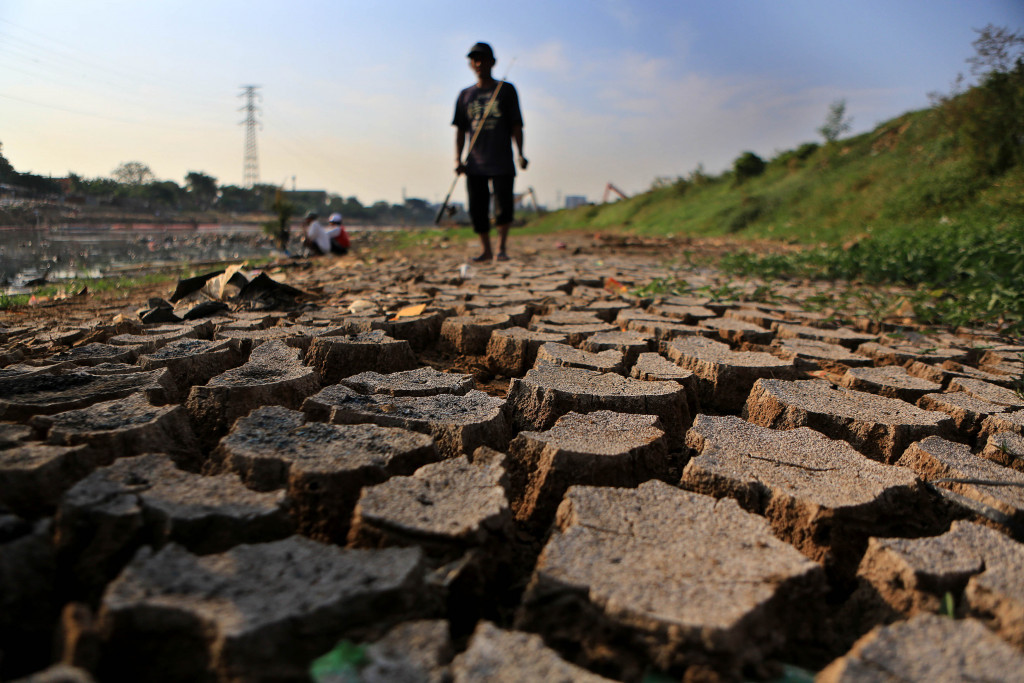Popular Reads
Top Results
Can't find what you're looking for?
View all search resultsPopular Reads
Top Results
Can't find what you're looking for?
View all search resultsLiving with drought
Water efficiency and rainwater catchment, for instance, should become an endless national movement, apart from environmental protection.
Change text size
Gift Premium Articles
to Anyone
T
here is nothing new about the long droughts the country is now enduring. This nation has umpteen times proved its resilience in withstanding climate phenomena, that can have disastrous impacts on human beings and their environment. But inaction, assuming that it will eventually pass, is a mistake that will not only exacerbate the damage but also leave us unprotected when the disaster recurs in the future.
The Meteorology, Climatology and Geophysics Agency (BMKG) has warned that the dry season may be drier and more intense this year than last year as a result of the El Nino phenomenon. The agency has classified West Java, Central Java, most parts of East Java, Yogyakarta, Bali and Nusa Tenggara as the regions most vulnerable to extreme drought, or more than 60 days without rain. Jakarta, Banten, Sumatra, Kalimantan and South Sulawesi are the second-most prone regions.
Although the dry season will only culminate in August, its impacts have already been felt in many areas. A number of regional governments have reported scarcity of clean water, declining supply of irrigation water and potential crop failure. Most recently, health authorities in Pacitan, East Java, reported an outbreak of Hepatitis A that infected more than 1,000 people as a result, albeit an indirect one, of drought.
The extraordinary event in Pacitan should teach other regions a lesson on how climate can contribute to the spread of a virus. Those people were infected after consuming water believed to have been contaminated with the virus; the river that used to supply their drinking water had run dry.
As the BMKG has forecast that the rainy season will only arrive in October or November, the worst has not come yet. Food security will be at risk if more rice-producing regions experience crop failure, and an energy crisis will be imminent if hydropower plants are in short supply of water. The chain effect of drought will continue in the form of inflation as a result of declining rice production.
Read also: Drought affects 103,000 ha of rice fields in 100 regencies/cities
Another cause for concern if the dry season persists are land and forest fires, which in the past have hurt our ties with close neighbors and placed Indonesia on top of the world’s list of carbon emitters. The forest fire risk has been far reduced thanks to the moratorium on new palm oil plantations, but danger still lurks as slash and burn practices continue.
Fully aware of the long drought and all its repercussions, the government has prepared a contingency plan. The Agriculture Ministry, for example, has proposed varieties of food plants that require less water, and the Forestry and Environment Ministry has ordered rangers to step up patrols to prevent forest fires.
While the success of the top-down efforts depends much on field operators, disaster mitigation always requires changes in people’s habits and mindset to perfectly work. Water efficiency and rainwater catchment, for instance, should become an endless national movement, apart from environmental protection.
We may survive the dry season, but our failure to preserve water will someday kill us.










